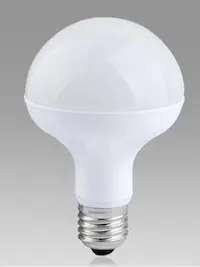A drop in prices for light-emitting diodes (LEDs) will make them an even more viable option this year. LEDs are energy efficient and have a significantly longer lifespan than traditional lightbulbs that are already used in many businesses and buildings.
Light bulb manufacturer Cree recently came out with a $10 LED light that can replace a 40-watt incandescent bulb. Another lighting manufacturer, Philips, said it will also release an LED this year that will also only cost $10.
"I just think that LEDs are becoming more affordable for consumers," Marianne DiMascio of the Appliance Standards Awareness Project (ASAP) told Scientific American last month. "If they buy this bulb for $9.97, they will cover that cost in the first year, and they have the bulb for the next 20 years, [and] that will bring them cost savings in the amount of energy that they use."
Electrical Contractor Magazine said the LED revolution is well underway as the government predicted that solid-state lighting (SSL) will be the majority of lighting solutions used in the next 20 years. SSL uses semiconductor LEDs as sources of illumination compared to the electrical filaments used in traditional lighting.
LEDs will also grow in popularity over the next several years due to the U.S. Department of Energy's ban on incandescent lighting because of its inefficiency. The phaseout of 100 watt incandescents began in January 2012 and once stores run out of their stock, they will no longer be available to consumers.
The magazine predicts the lifespan of LED indoor lighting will increase from its current 25,000 hours to 73,000 hours by 2030. It also predicts that commercial LED lighting will increase to 70 percent of a market share by the year 2030.





